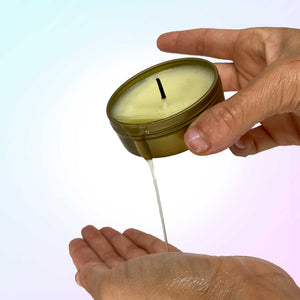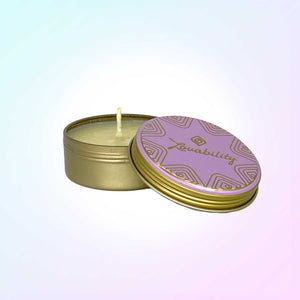Is it some thick, plastic material that is used in the sex industry? Not exactly. Although the word "condom" has its definition in the Merriam Webster's Collegiate Dictionary (10th Edition), it refers more to the female condom, sometimes known as a sanitary or medical condom. But what is a condom?
Several different shapes, sizes, and thicknesses are available for condoms. Male condoms are generally made out of latex, a rubber-like substance. In contrast, latex condoms are usually a mixture of polyisoprene and other synthetic materials. The latex condom is what most people think of when they hear the word condom. The other type is the rubber condom, which has come a long way in recent years, from being an extraordinarily uncomfortable and sometimes painful product to light, barely felt but incredibly resilient material.
What exactly is a condom? How does it work? And what are the types of condoms?
2 Types of Condoms
- The female condom is used in making sexual contact with a person other than one's spouse. The female condom can be inserted and lubricated before use to make it easier for a woman to insert and keep in place. The female condom has a different shape than the male condom, so it requires the woman to perform specific techniques before placing it correctly. Some women will hold it with their fingers, while others will grip it like a tampon. Most correctly use the female condom.
- The male condom is used in the production of the spermatozoa, or sperm. As with the female condom, the male condom is meant to fit correctly and be inserted and then held tightly against the testicles to hold the spermatozoa there until it bursts. At this point, the expelled sperm is white and small enough to be identified within the condom.
The male condom differs from the female condom in that there is no pre-engorgement of the sperm, and the spermatozoa do not have a rapid release path, so it does not need to be expelled as it bursts. Because of this, the sperm will stay in the condom for a more extended period, increasing its chances of fertilization.
Polyurethane condoms were made from a synthetic polymer that gave them elasticity and did not stick to latex. This made them very useful for making a barrier to prevent unwanted pregnancy. Today polyurethane is no longer used in made condoms because it can be harmful if it comes into contact with an open wound. Instead, it is made using ethylene propylene diene monomer (EPDM), which does not react latex. These condoms are also less expensive, reducing breakage, making them more popular than polyurethane condoms.
Latex-free condoms, also called non-latex condoms or condoms without latex, can be used by people who don't want to be exposed to the harmful effects of latex. However, these condoms have one major downfall: they contain phthalates, a substance that can cause an allergic reaction and can cause damage to the reproductive organs over time. It is therefore vital to make sure that any latex used during sexual intercourse is non-latex. Also, because it is made from a synthetic material, these condoms are more likely to contain allergies, putting both partners at risk.
To ensure that their products are indeed safe, most condom manufacturing companies also carry out condom testing before making a sale. Condom testing is done by the Food and Drug Administration (FDA) and can detect many impurities in condoms. The test can detect blood, semen, latex proteins, and any bacteria or other contaminants. This is vital because the FDA demands that manufacturers take every precaution to ensure that the product does not pose a risk to the sexual health and safety of the users.
Advantages and Disadvantages of Different Condoms
A condom is a translucent sheath-like barrier device used to prevent the risk of getting an STD or sexually transmitted disease. However, it is not 100% effective in preventing pregnancy and other complications. There are both female and male condoms available in the market. Many couples prefer to use male condoms as they can last longer. However, most couples do not know that there are several types of condoms, each with unique advantages and disadvantages. This article will discuss some of the popular kinds of condoms commonly used in the market today.
- The Diaphragm condom, also known as the condom that holds up the baby, is perhaps one of the oldest and most common types of condoms still in use today. It has one large side pocket with an opening at the top where the penis is inserted. It is made of latex, safe to use even during pregnancy and when undergoing oral contraception. Diaphragms are also safe to use when a person is not using any form of birth control. On the other hand, this type of condom could be the most flexible condom, which allows the man to move around during his sexual activity.
- The Latchback condom is another type of condom used to prevent pregnancies and sexually transmitted diseases by using a retention mechanism sealed in the middle. Because the retention mechanism cannot be seen, this condom can have its shaft or head damaged during insertion if it is not worn correctly. It can also cause pain during penetration if the ring is worn too tight or not made according to the specifications.
- The T condom, also known as the disposable condom, was designed to be used as a contraceptive. However, it is also commonly used as a dental dam or as an astringent. It is not made of latex or rubber but made from paper or plastic. It is easily torn and can easily be penetrated by sharp teeth from a baby toothbrush. These properties can cause irritation and burning sensations when inserted into the vagina.
- The Fish tape condom, also known as the peel and stick condom, is a trendy condom that can be used as a contraceptive. This type of condom works in the same way as the peel and stick, with the only difference being that it is applied to the vagina before sex and peeled off afterward. Once peeled off, it adheres to the vaginal skin very securely, preventing pregnancy. It also sticks to the vaginal wall very well, creating a solid barrier to sperm that would otherwise enter the vagina before birth.
- Another common form of female condom are the so-called "double condom." These are shaped like a "U" shape, with one side featuring an inner ring, while the other contains the outer ring. When inserted into the vagina, the inner ring breaks off, while the outer ring stays intact. The inner ring is used to cover the cervix while still covering the external parts of the vagina, meaning that no sperm can penetrate the cervix before birth. It is very effective at preventing pregnancy because even before conception takes place, any sperm that might have already entered the woman's body will be flushed out of the system before conception occurs.
Will a condom allow a girl to become pregnant?
If you use condoms every time you have sexual contact, they are 98% effective at preventing pregnancy. However, it is reported condoms are only effective 85% in real life due to incorrect use and things not always going to plan.
Can sperm pass through a condom or not?
Condoms are designed so sperm cannot pass through them. This could only happen if the condom is ripped or torn. Otherwise, the condom will keep the sperm inside. Condoms are great at preventing pregnancy with 98% effectiveness according to the NHS.
Is it possible to have less pleasure by wearing a condom?
Condoms create a barrier between partners, limit physical contact, and attenuate heat transfer, all of which can reduce sexual pleasure.
Why might condoms hurt?
There are three main reasons women don't like sex with condoms: latex allergies, problems with nonoxynol-9(N-9), and partners who don't use enough lubricant. Any one of these issues can make a woman feel very uncomfortable with irritation.
Why do men change condoms?
A new condom will prevent both parties from STI’s and also semen or precum from entering the vagina. To ensure that the condom is removed correctly, the male should keep the base of his condom in place as he pulls it out.
Why might condoms "burn" my girlfriend?
Allergy to condoms potentially. Some materials can irritate the vulva, and this could lead to stinging or burning. Internal pain can result from objects inserted into the vagina, and latex condoms can cause itching, swelling, and burning.
More Articles You Might Love

Get To Know Your Vulva




















